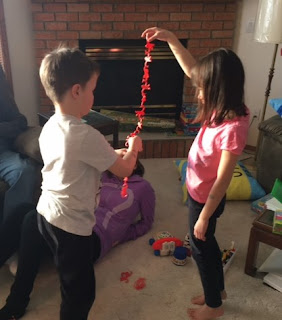I have also come away from the week with a new respect and admiration for young parents. As adults, our own children have demanding jobs and there always seems to be the rearranging of schedules with a busy life style. Both families live in the city and distances to work and school play a part. Lyle and I were lucky in that when we were raising a young family we lived in a relatively small rural town. Both school and work were within walking distance.
During this past week, I also came away with an increased admiration for parents who are blind or partially sighted. Our children were six and seven when I became legally blind and so they had some understanding of what I could and couldn’t do and of what they should or shouldn’t do. This scenario isn’t necessarily true for couples who are without sight and who choose to have a family. The early years of infancy must be quite a challenge.
On the plus side, I do think that our children grew up with an added sense of responsibility and an awareness of the needs of others. Learning to read was one example. In the early days, bedtime stories took a twist. Instead of me reading the story, our children read to me. This tradition has now carried through to our granddaughter. As she is able, Lexi reads her library books to me and spells out unfamiliar words. She knows that I am unable to see the print.
I also remember the teen years when there was a push to get a driver’s license. I looked forward to this event equally with our son and daughter. Yes, they could learn to drive as soon as the age requirement was met, and yes they could use the family car. The codicil, however, was that they would drive Mum around whenever she had need of a personal chauffeur.
Those were the big issues. The little issues of being a blind or visually impaired parent were likely more challenging. How to answer questions such as the following! How does this transformer work? Where is my lunch kit? Can you pull the splinter out of my finger? I fell down and is my head bleeding? Can you help with homework? I need a whatever for school tomorrow. Can you take me to the store? These were just a few of the small but frustrating stumbling blocks of daily living. Just as parents and grandparents with limited or no sight learn to be resilient, so do the children and grandchildren.
We are looking forward to spring break when we will have another opportunity to spoil our granddaughter. This is one of the joys of being a grandparent. At the end of the week, we will give her back to her parents. While our children might give us a few gray hairs, our grandchildren keep us young.
There is a picture with this post. Do you remember the game, Barrel of Monkeys? In the picture, Benji and Lexi are standing holding up a chain of red plastic monkeys.
Benji and Lexi playing Barrel of Monkeys
